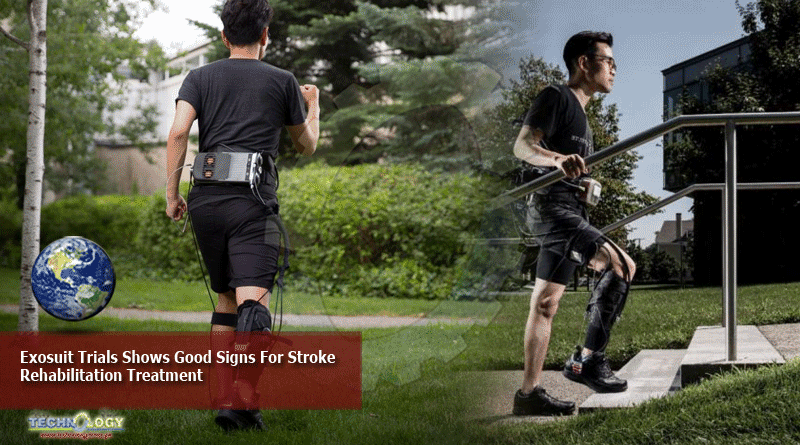Team Of U.S Researchers Published Results Of Multi-Center, Single-Arm Exosuit Trial Of Rewalk Restore™ For Gait Training In Individuals…

Undergoing Post-Stroke Rehabilitation.
They found the device safe and reliable during treadmill and overground walking under the supervision of physical therapists. The article was published open access in the Journal of NeuroEngineering and Rehabilitation.
The authors are the principal investigators of each of the five testing sites: Louis N. Awad, PT, DPT, PhD, of Spaulding Rehabilitation Hospital, Boston, MA, Alberto Esquenazi, MD, of MossRehab Stroke and Neurological Disease Center, Elkins Park, PA, Gerard E. Francisco, MD, of TIRR Memorial Hermann, Houston, TX, Karen J, Nolan, PhD, of Kessler Foundation, West Orange, NJ, and lead investigator Arun Jayaramam, PT, PhD, of the Shirley Ryan AbilityLab, Chicago, IL.
The ReStore™ exosuit (ReWalk Robotics, Ltd) is the first soft robotic exosuit cleared by the FDA for use in stroke survivors with mobility deficits. The device is indicated for individuals with hemiplegia undergoing stroke rehabilitation under the care of licensed physical therapists. Hemiplegia causes weakness of the ankle, limiting the ability to clear the ground during stepping and hindering forward movement. This leads to compensatory walking patterns that increase effort and decrease stability.
ReStore is designed to augment ankle plantarflexion and dorsiflexion, allowing a more normal gait pattern. Motors mounted on a waist belt transmit power through cables to attachment points on an insole and the patient’s calf. Sensors clipped to the patient’s shoes transmit data to a handheld smartphone controller used by a trained therapist to adjust levels of assistance and monitor and record key metrics of gait training.
The trial enrolled 44 participants with post stroke hemiparesis who were able to walk unassisted for 5 feet. The protocol consisted of 5 days of 20-minute sessions of treadmill and overground training under the supervision of licensed physical therapists. To assess the therapeutic potential for ReStore in rehabilitation, the researchers also explored the effects of the device on maximum walking speed, measuring participants’ walking speed in and out of the device using the 10-m walk test, before and after the five training visits. For safety purposes, some participants were allowed to use an AFO or cane during walking sessions.
The trial determined the safety, reliability, and feasibility of the device in this stroke population. “We found that the ReStore provided targeted assistance for plantarflexion and dorsiflexion of the paretic ankle, improving the gait pattern,” explained Dr. Nolan, senior research scientist in the Center for Mobility and Rehabilitation Engineering Research at Kessler Foundation. “This is an important first step toward expanding options for rehabilitative care for the millions of individuals with mobility impairments caused by ischemic and hemorrhagic stroke.”
The trial’s exploratory data indicated positive effects of the training on the walking speed of participants during exosuit-assisted walking and unassisted walking (walking without the device). More than one third of participants achieved a significant increase in unassisted walking speed, indicating that further research is warranted.
Dr. Nolan emphasized that the trial was not designed to measure the device’s efficacy: “Controlled trials are needed to determine the efficacy of ReStore for improving mobility outcomes of stroke rehabilitation.”
This news was originally published at technologynetworks.com
